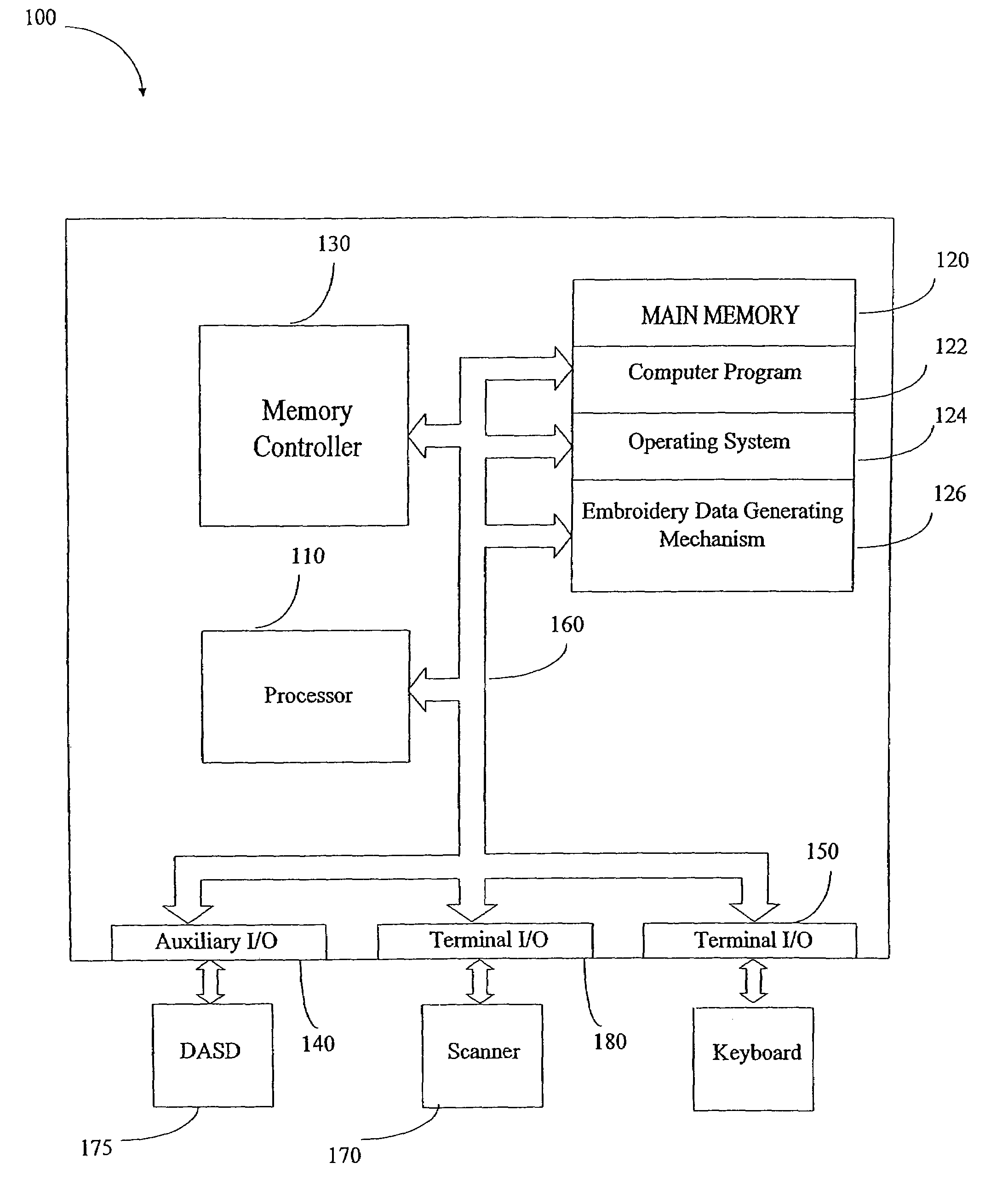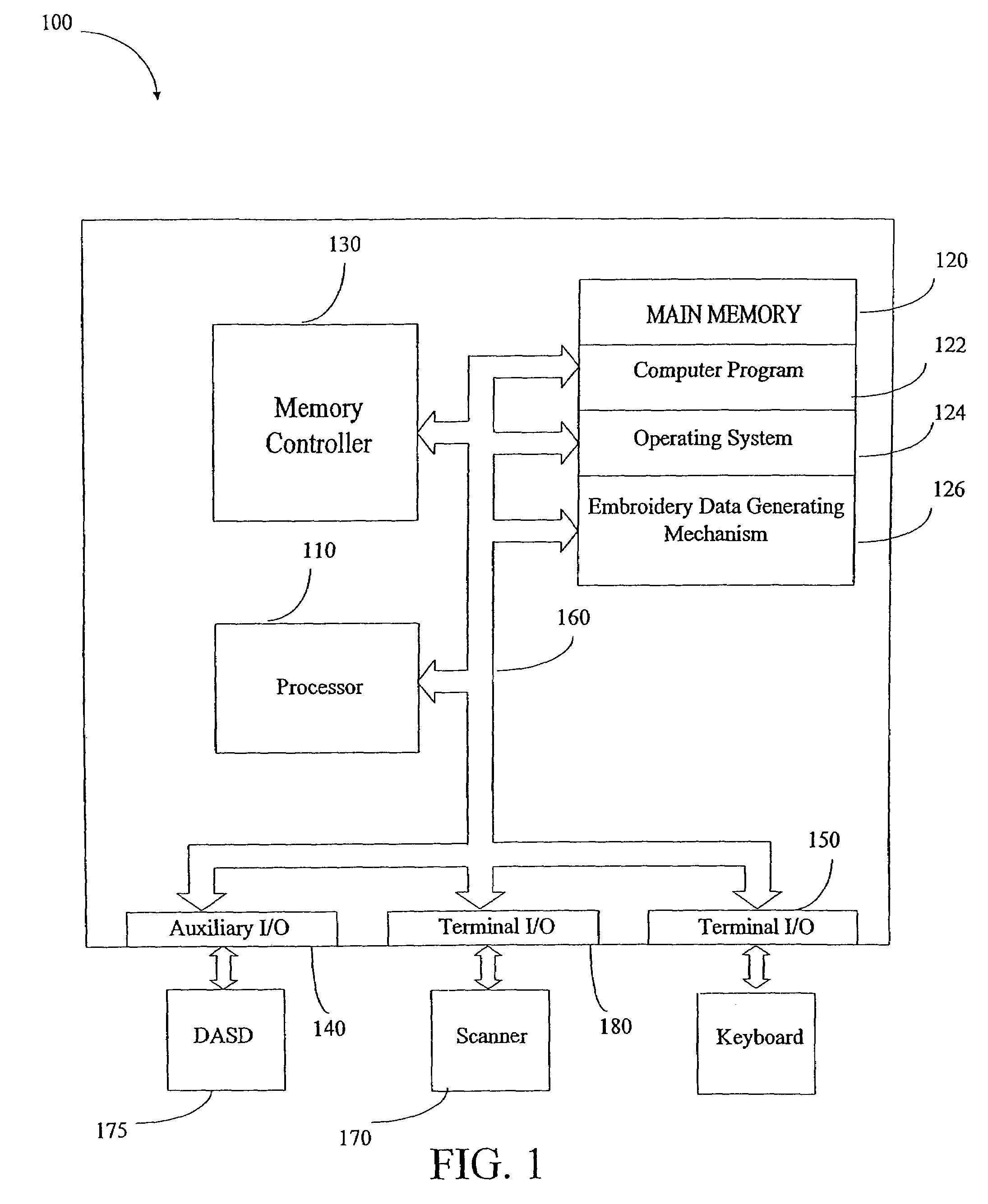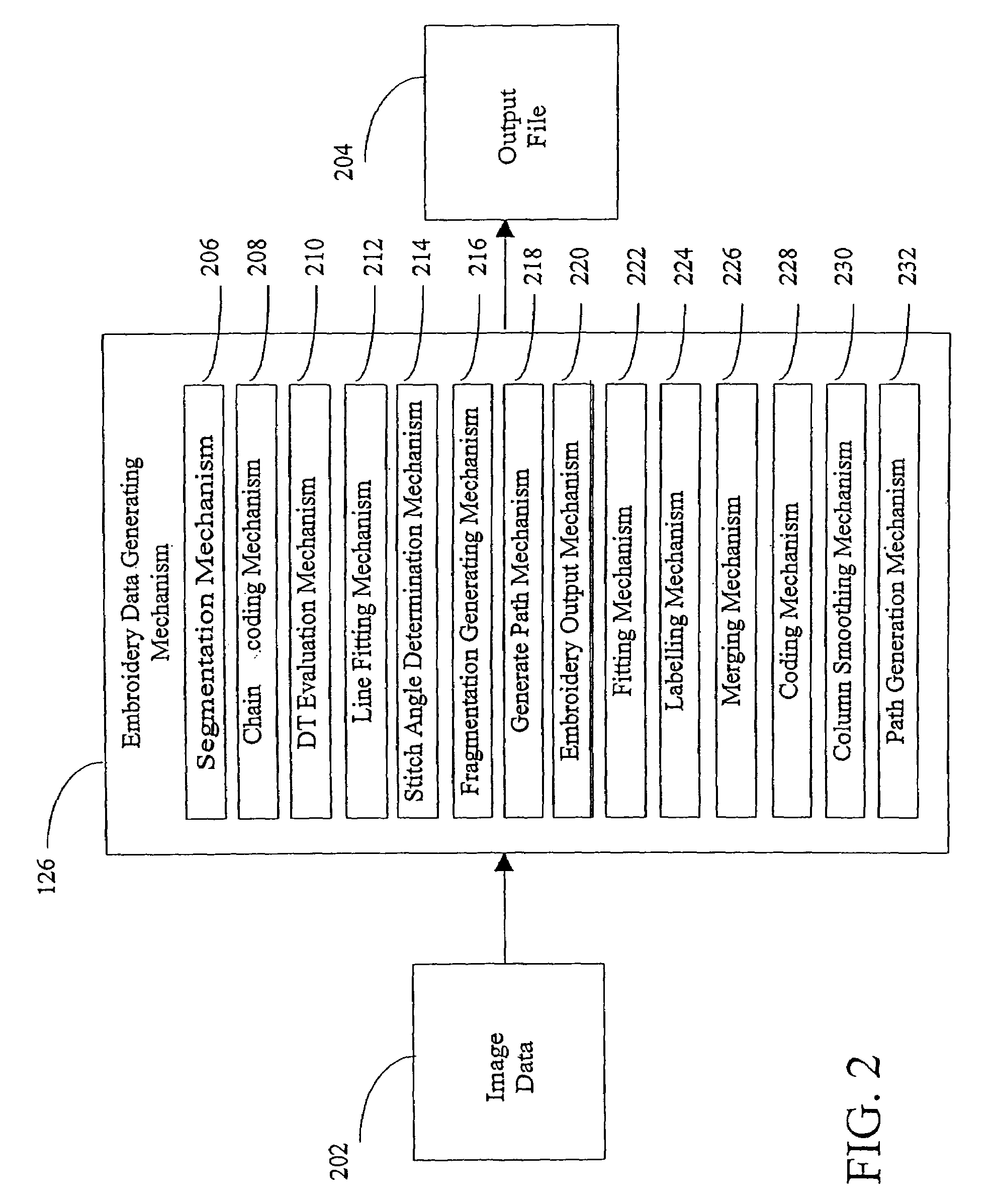Automatically generating embroidery designs from a scanned image
a scanning image and automatic generation technology, applied in the field of embroidery stitching, can solve the problems of time-consuming and laborious, using high-level primitives to define embroidery data, and the method of generating embroidery designs is not fully automated, so as to achieve automatic, efficient and accurate
- Summary
- Abstract
- Description
- Claims
- Application Information
AI Technical Summary
Benefits of technology
Problems solved by technology
Method used
Image
Examples
Embodiment Construction
[0033]Referring now to FIG. 1, a computer system 100 in accordance with a preferred embodiment of the present invention is shown. It should be understood that the method and apparatus of the present invention apply equally to any computer system, regardless of whether the computer system is a complicated multi-user computing apparatus or a single user device such as a personal computer or workstation. Computer system 100 includes a processor 110, main memory 120, a memory controller 130, an auxiliary storage interface 140, and a terminal interface 150, all of which are interconnected via a system bus 160.
[0034]Note that various modifications, additions, or deletions may be made to computer system 100 illustrated in FIG. 1 within the scope of the present invention, such as the addition of cache memory or other peripheral devices. A preferred embodiment of the present invention utilizes a file containing bitmapped image data. This data can be read into the file using a scanner 170 con...
PUM
 Login to View More
Login to View More Abstract
Description
Claims
Application Information
 Login to View More
Login to View More - R&D
- Intellectual Property
- Life Sciences
- Materials
- Tech Scout
- Unparalleled Data Quality
- Higher Quality Content
- 60% Fewer Hallucinations
Browse by: Latest US Patents, China's latest patents, Technical Efficacy Thesaurus, Application Domain, Technology Topic, Popular Technical Reports.
© 2025 PatSnap. All rights reserved.Legal|Privacy policy|Modern Slavery Act Transparency Statement|Sitemap|About US| Contact US: help@patsnap.com



